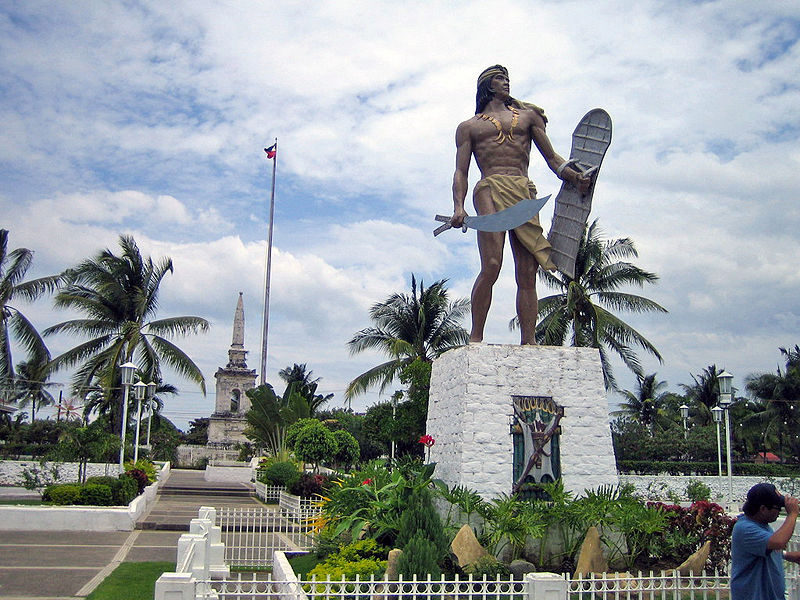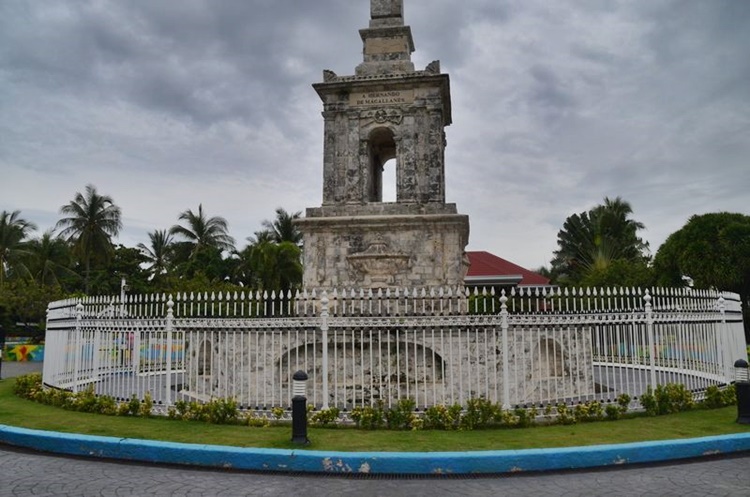Mactan Shrine is located on Mactan Island, just off the coast of Cebu, is a must see for everyone interested in Filipino history. It commemorates the Battle of Mactan which took place in 1521 between the Spanish and Visayan (central Philippines) indigenous peoples in April 1521 and, along with paintings and plaques about that war, also contains two others other important shrines - the Lapu Lapu Shrine and the Magellan Shrine.
 Lapu-Lapu Shrine
Lapu-Lapu ShrineThe Lapu Lapu statue is said to be on the exact spot where the battle was fought and where Magellan was killed.
The statue shows Lapu Lapu holding a sword in one hand and a shield on the other (these two weapons are said to have been used by Lapu Lapu in his combat with Magellan).Lapu Lapu was one of two chieftains and kings (datu) of Mactan Island, and he vigorously resisted the early Spanish colonists in their attempts to conquer the Philippines and convert them to Christianity.
When Ferdinand Magellan arrived in the Philippines in 1521, he took possession of the Philippines in the name of Spain.
After early friendly encounters with the rajahs of the islands of Homonhon and Cebu in the central Philippines, Magellan and his men faced off against Lapu Lapu and his warriors in the Battle of Mactan. During this battle the Spanish burned a village of the inhabitants of Mactan. Magellan was then killed by Lapu Lapu.
History records that Lapu Lapu was the first Philippine native to resist foreign invasion and colonization. As such, he is regarded as the first national hero of the Philippines.
The Battle for Mactan is re-enacted most years on the beach at Magellan Bay, Mactan Island.

Magellan Monument
The Magellan Monument is near the Lapu-Lapu Shrine, t, the Portuguese navigator who commanded the Spanish fleet sent out by the Spanish king Charles I (later the Holy Roman Emperor Charles V) in 1519 to find a western sea route to Asia (via the southern tip of South America) and the spices, such as nutmeg and cloves, that the "Spice Islands" (now known as the Moluccas and part of Indonesia) produced.
Europe needed those spices to preserve and spice foods in that pre-refrigeration era. This is why the route is often called the "spice route".A route to Asia (via South America) had to be found by Spain as its rival, Portugal, already dominated the eastern route to Asia (via the Cape of Good Hope at the southern tip of Africa).
The Magellan Monument was built in 1866 by the Spanish colonial rulers of the Philippines. On one side Magellan's name is written in the original Portuguese language. On a second side is a dedication to "Spanish glory". On a third side is the name of the Spanish governor of the Philippines of the time (Don Miguel Creuz) and on the fourth side is the name of the Spanish monarch of the time (Queen Ysabel II).

Overall
It is a really great place to visit especially on family bonding or in any free time so you could relax and enjoy how quickly time has changed.it is also a good place to remember that we are thankful to be here and that it can also remind us about our history.